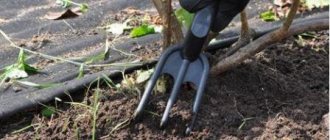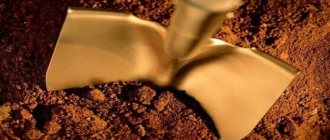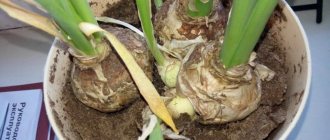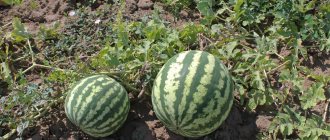Currants seem to be an unpretentious plant, but if you don’t take care of them, they will produce small, tasteless berries. In order to manage everything and not forget anything, you need to create a currant care calendar. To do this, in a notebook, write down the stages of care by month, which includes protection from pests, fertilizing, watering, mulching, pruning.
Each month has its own tasks for caring for red and black currants. We suggest making a calendar by month, according to the advice of agronomists and experienced gardeners.
End of March, beginning of April
It is necessary to draw up a calendar from the very first days of spring, as soon as the snow begins to melt. After the snow has melted, when the cover has been removed from the bushes (in cold areas, many gardeners cover currants with covering material), it’s time to start caring for the currants.
Sanitary pruning
Next, caring for currants after winter, in spring, begins with sanitary pruning. Broken, twisted, thickening bushes and diseased branches are cut out, and at the same time an inspection is carried out to detect pests.
Formative pruning can be done. Find 2-4 year old shoots. They are not too hard, not old yet. Leave 5-7 buds on their branches, the rest should be cut off. Annual shoots are shortened by 10-15 cm.
Red and white currants need to be pruned differently, as their branches can produce a large harvest for up to 8 years. And the most popular variety of red currant, called “Red Cross”, produces a harvest of up to 15-20 years.
In red currants, you can only cut off the unripe tops of the shoots, tops, and very old branches. After trimming, there should be 20-25 healthy branches left on the bush, which are 1-8 years old.
Pay attention to the buds; if they are “swollen,” then the plant has already been attacked by a bud mite. Without sparing, pinch off the swollen buds before the pests wake up and begin to harm the currants.
Do not forget to inspect the core of the cut layer. If it is not green, but dark, its center has been turned into dust, it means that the bush is infected with the larvae of the narrow-bodied borer. If a seedling has many affected branches, then it must be dug up and burned.
Treatment of currants against diseases
Caring for currants of all varieties is almost no different. As soon as the snow melts, the mulch must be removed around the bushes, and before the buds swell, that is, before the sap flows, you must treat them with 3% copper sulfate in order to prevent plant pests from waking up.
For processing currants: copper sulfate, Bordeaux mixture 3% solution
Didn’t have time to treat with a highly concentrated composition? Then, after the buds open, you can treat them with 1% copper sulfate. Thanks to the low concentration of the drug, the kidneys will not be burned, and the pests will disappear.
After bud break - treatment with 1% drug.
If the currants are healthy, then preventive spraying can be carried out before the buds open. To protect each bush, treat the currants with one of these preparations:
- Fitosporin-M,
- Gamair,
- Sporobacterin or
- Topaz.
Biological products Fitoverm and Bitoxibacillin will also help protect currants. For severely affected plantings, Aktar and Biotlin are used. Fufanon-Nova and others.
For mild infestation, folk remedies will help: garlic infusion, soap solution, onion peel infusion.
Some gardeners' spring care for currants includes scalding the currants with boiling water. But such a procedure will not have a strong effect on pests. While the boiling water is pouring, it will cool down, and warm water will have no effect on the larvae.
If you practice scalding, then add 10 aspirin tablets or 100 grams of vitriol to a bucket of boiling water. Raise the watering can 10-15 cm from the branches and pour over the entire bush. One bucket should be enough for 2 bushes. The hot water temperature should be 80 degrees.
Preparation of cuttings for planting
When pruning currants in the spring, which is carried out before the buds open, set aside healthy branches and place them in a jar of water.
You can cut cuttings 25-30 centimeters long with 5-7 buds, plant them immediately in loose soil, where a bucket of humus was added for digging and 1 sq. meter 1 gram of nitroammophoska.
For rooting, branches of annual growth are useful, but old ones also take root well.
For cuttings, branches that are 2-3 years old and about the thickness of a pencil are more suitable. The time for cutting cuttings is the end of March, the beginning or middle of April, it all depends on the region. Once sap flow begins, it is too late to prune.
The top of the cutting (2 buds) must be cut off. The lower part is about 2 buds deep and immersed in the ground.
In the southern regions they can be planted in the ground, but in the Moscow region and in cold areas, the cuttings are placed in a jar, leaving about 2 centimeters under water or up to the second bud from the bottom. If you lower it lower, the cutting may rot. The water must be settled. Make sure that the water does not drop lower and does not become cloudy; it must be changed more often and added when it evaporates.
How to cut? It is recommended to cut obliquely. If it doesn’t work out, the cutting will still take root. The best place for cans of water is a windowsill, so that the temperature is no higher than +23...+25 C.
When will the roots appear? You will have to wait 2 or 3 weeks for the roots to appear. After 30-40 days, the roots grow to 3-5 cm. When the weather becomes warm, these roots can be planted in the ground.
To protect against the return of frost, the seedlings can be covered with a cut-off water bottle. Before planting, the lower ones, which have begun to bloom or have not yet blossomed, must be removed.
April
In April, fertilizing and treatment against pests, as well as loosening, are carried out. You need to loosen it like this: step back 50 cm from the bush, loosen it to a depth of 7-9 cm to remove the crust after the snow melts. At the base of the bush you can loosen it to a depth of 3-5 cm. If it is hot in April and the ground has become dry, then the seedlings need to be watered.
Mid-April: Fertilizing with nitrogen fertilizers
By mid-April, currant plantings should be fed with nitrogen fertilizers so that the currants begin to grow green mass. Many people add ammonium nitrate in solution: dilute 20 grams in a bucket of water, pour 4-5 liters under each bush.
For the first feeding of currants - ammonium nitrate. The concentration of the solution is 20 g per 10 liters of water.
During the period of bud pecking, ammonium sulfate (40-50 g) or dry ammonium nitrate (25-30 g) is added per 1 sq. m. meter. Slurry diluted 1:4 is also suitable for spring feeding. You need to pour 1 liter under the root.
Late April early May: Treatment of currants against pests
The most common diseases of currants: anthracnose, rust, septoria, gray rot. If these diseases have been noticed, then before the buds open, the bushes are irrigated with the following preparations:
- Copper sulfate (3%), iron sulfate (5%), or Bordeaux mixture (3%).
- Heavily infected currant bushes can be treated with Gamair, Fitosporin-M, Topaz, and Fundazol. Use strictly according to instructions.
- Irrigate with infusion of ash: pour 100 g into 4 liters of water, leave for 3 days, then strain and spray..
To prevent the appearance of currant glass, bud mites, borers, sawflies, moths, gall midges, as well as aphids, you should use “Bitoxibacillin”, “Fitoverm”.
Against kidney mites - preparations based on colloidal sulfur. Or Tiovit Jay.
Against kidney mites - preparations based on colloidal sulfur. Or Tiovit Jay.
If you do not want to use purchased products, you can spray 4-5 with infusion of tobacco, onion scales, garlic or laundry soap. But folk remedies will be effective only at the beginning of the disease. For serious lesions, you will need “Aktara”, “Karbofos”, “Fufanon”, “Aktellik”, “Biotlin”.
The drug PFCleros against kidney mites
In order for currants to be less affected by mites, it is necessary to choose varieties that are less susceptible to the attacks of this pest, for example, the Black Stork variety.
All varieties of black currants, apple trees, cucumbers, and tomatoes can be treated with the effective preparation “PFKleros” (PSK 25% aqueous solution). The product was developed jointly with the Belarusian Institute of Plant Protection.
This drug helps fight the pathogens of powdery mildew, currant bud and spider mites. It should be sprayed with a solution of the drug “PFKleros” (PSK) during the growing season according to the instructions. The consumption rate is 2-4 liters per 1 ha. When spraying, it is necessary to ensure complete wetting of the leaves and branches of the plants.
Advantages of the drug "PFKleros" (PSK):
- Has a dual effect (fungicide and acaricide);
- Endowed with high efficiency;
- Quickly decomposes on the surface of the crops on which the treatment is carried out: no polysulfides are detected on the leaves after 80 minutes;
- An aqueous solution is less toxic than dry products;
- Source of a number of macro- and microelements;
- Low cost. The drug "PFKleros" (PSK) cannot be used to treat gooseberries (do not allow the spray to get on the gooseberry branches), since all the leaves may fall off.
What drugs do NOT use before flowering?
Before flowering, you should not use too concentrated preparations, for example, 3% copper sulfate, iron sulfate (5%) and Bordeaux mixture (3%). Strong drugs can burn the buds that are preparing to bloom.
Systemic drugs should also not be used before flowering.
May
At the flowering stage, a solution of superphosphate and potassium sulfate should be poured under the roots. The concentration of the solution should be 1-2%. You can use a solution of manganese sulfate and boric acid (0.1-0.5%).
“Protsvetok” recommends treating currants with BFC-Lera in early May. The drug is non-toxic. You don’t need to treat with other drugs; this remedy will be enough.
At the end of May, it is useful to treat currants with Fitoverm and Trichoderm. It is enough to pour Trichoderma once under the root and the pests that settle in the soil will be destroyed.
Red and white currants do not suffer much from drought, unlike black ones. The first watering of red and white currants is postponed to the end of May, or better yet to the beginning of June, when the ovary appears on the currants. Under each bush you should pour 2 to 5 buckets of water so that the soil is moistened to a depth of 35-40 cm.
Black currants should be watered immediately as soon as the soil begins to dry out. She does not tolerate drought well. But she doesn’t like strong swampiness either.
Second feeding of currants with potassium-phosphorus fertilizers
In order for the currant harvest to be generous, the plantings require fertilizing with potassium and phosphorus at the flowering stage, then at the planting of the crop and when the berries ripen.
For summer feeding, superphosphate and wood ash are used. Fertilizer must be incorporated into the soil. Make a hole at a distance of 30-35 cm from the bush, pour 200 g of superphosphate, 300 g of ash and 5 kg of humus into it. The bushes are watered. When the fertilizers are absorbed, the soil is leveled.
Ash solution for feeding currants
Dry ash is added to the holes when planting young currants so that the seedlings take root faster. The application rate is 200 g per hole. For adult currants, fertilizing in the spring is done in this way: 300-500 g of ash are scattered around the bush (depending on the size of the currant), then embedded in the soil by loosening and watered abundantly.
At the beginning of April or in the first ten days of May, ash solution is used for spraying, as well as for prevention and protection against diseases and pests.
The solution is prepared as follows: 200 g of ash, 1 glass of 9% vinegar per 10 liters of water.
For spraying, use a garden sprayer. Do not be afraid that the liquid will get on the leaves, flowers and berries. After treatment there is no need to water for 2 days.
Repeated treatment against diseases and pests
In summer, it is better not to treat currant bushes. First you need to harvest the crop, and then treat it with folk remedies, but they do not last long.
Currants can be treated with biological fungicides all year round. If there is no urgent need, then it is better after fruiting. After harvesting, you can treat it with a solution of Bordeaux mixture: 100 g per 10 liters of water.
Biological preparations for currant processing
Blackcurrant care includes protection and pest control. Many gardeners trust only biological products because they are non-toxic and safe for birds, animals and bees.
Lepidoid - effective against caterpillars and lepidopteran pests. Currant pests stop producing offspring. To get rid of all insects, it is necessary to process several times at temperatures above 15 degrees. The product does not work at low temperatures. It is better to carry out the treatment in the evening so that the sun's rays do not burn the foliage.
Bitoxibacillin is destructive to a large number of pests. During the season, treatment must be carried out 3 times. After exposure to the drug, the parasites stop gnawing on the leaves and die. Currants should not be processed during flowering and fruiting. Use in the evening at temperatures above 17 degrees.
Phyton - actively fights pathogens, preventing currant diseases. In addition, the drug improves soil microflora and can be combined with fertilizing and other preparations. Non-toxic to people and animals.
Denobabacillin has a detrimental effect on parasites that chew currant leaves. Insects die 2-3 days after they gnaw on the sprayed plants. Codling moths and cutworms do not die. The drug has no effect on them.
Trichodermin - adapted for processing currants and other horticultural crops. It improves growth, increases plant immunity, fights pathogenic microflora and diseases.
Its main advantage is that it is absolutely safe. The berries can be eaten on the same day by waiting several hours after spraying the currants and rinsing them with plenty of water. But it is recommended to use gloves when working with this product. Work must be carried out in the evening, at temperatures above 14 degrees.
Preparation based on Trichoderma
New generation biological fungicides based on Trichoderma are in demand for caring for currants and gooseberries in the fall and at any time of the year. It contains the soil fungus Trichoderma, so it is widely used in agricultural technology.
The elements of the product release carbon, which breaks down organic matter into components that are converted into phosphorus-nitrogen compounds, thereby helping to enrich the soil.
Preparations based on Trichoderma can rid the soil of many fungal diseases. Obvious advantages:
- Effective prevention of fungal diseases;
- Treatment of fungal diseases;
- Improvement and saturation of soil;
- Restoration of soil after chemical treatment;
- Disinfection of soil and holes before planting.
Action of Trichoderma: as soon as Trichoderma is in the soil, its fungi immediately begin work on creating their own colony of fungi. Gradually, the colony destroys other fungal colonies, clearing the soil of infection.
In addition, the fungus secretes antibiotics that prevent diseases from developing. All processes produced by Trichoderma fungi accelerate plant growth and increase resistance to diseases.
All varieties of this drug have an equivalent effect, so you can choose any one. Each of the preparations can be used for spraying plants, root watering, and treating seeds and soil.
You can spray several times during the season, since the biological product does not accumulate in plants and fruits.
Harvesting
Feeding . We pour wood ash under each bush and embed it in the soil.
Pests . We destroy moth nests and diseased berries . Be sure to trim the tips of those shoots that are affected by powdery mildew.
Old bushes are often affected by moth
We collect ripe berries.
June
In June, currant bushes need to be supported if they did not have time to do this in the spring. Bushes under the weight of berries can bend to the ground and become dirty with earth.
Watering and weeding
While continuing to care for currants, do not forget to weed and water
In June, the berries begin to actively fill, so watering will be very useful for the ripening of the berries. You can scatter 1 cup of ash under each bush and loosen it.
Powdery mildew or other diseases may appear this month. Foliage can be sprayed with Topaz or soda ash.
In June, the berries begin to ripen, turning black. To ensure that the berries ripen well, currant bushes can be fed. In a bucket of water, dilute 1.5 g of copper sulfate, 2 g of boric acid, 2.5 g of zinc sulfate and 2.5 g of ammonium molybdic acid. The solution should be sprayed onto the plantings, thoroughly moistening the leaves of the plants.
Collection of currant berries
When the first ripe berries appear, you can begin picking them, leaving unripe berries on the bushes. At the same time, you should inspect the bushes for the presence of pests. If pests or diseases are noticed, it is better to carry out treatment with folk remedies.
Watering the bushes
Watering currants in June must be carried out, especially during the dry month. Currants need them to fill the berries. Water 1 bucket per seedling as soon as the soil begins to dry out. The formation of crusts and cracks in the soil should not be allowed.
Mulching
After watering, mulching should be done to delay the evaporation of moisture. You can scatter a bucket of compost under each seedling. Many gardeners tear up grass and lay it under bushes.
Fighting aphids
Aphids can be removed with a solution of green soap. Some gardeners tie yellow ribbons to currant bushes. “Prosvetok” recommends that you can try it.
Answers to frequently asked questions
Do I need to prune currants in spring?
Yes, this procedure helps increase productivity and improve the health of the bush.
What to do if this year the buds bloom already in March?
Postpone the procedure until the fall. It will be much worse if you cut off the branches of an awakened plant.
July
In July, you should continue to water the currants, as the berries fill with juice and ripen. Without watering they will be small and tasteless.
The harvest continues. The berries weigh down the branches more and more. If there are no supports, use a special hoop.
Harvesting, watering
In July, it is necessary to water, pouring 1 bucket of water under each bush. Gardeners recommend making an infusion of herbs. This will include watering and fertilizing. After fermenting the herbal infusion, pour 1 liter of infusion into a bucket of water and pour it under the root.
After watering, loosen carefully, retreating 50 cm from the bush so as not to touch the roots. In summer, crusting should not be allowed to form.
Other care
In July, it is important to monitor the condition of the young animals that were planted in the spring. It can be attacked by various pests. If you put fertilizer in the hole when planting, you don’t need to fertilize it yet. But we must not forget about watering.
Schemes for the formation of bushes in spring
Let's consider four main schemes for the formation of currant bushes.
- Root pruning. This technique is used to cut out diseased and infected branches. The cut is made straight from the root collar so that no stump remains.
- Pinching the top. A twig with 1-2 buds is cut off. This is done to stimulate branching. You need to remove those buds that are directed inside the bush.
- Trimming to ring. This technique removes side shoots. Filing is carried out according to the flow. The cut should be perpendicular to the growth of the branch.
- Thinning. We cut out everything that grows towards the center of the bush and thickens it. This is necessary for free access of sunlight and air inside the bush.
August
During August, it is necessary to carry out 5 waterings, one bucket for each seedling. In August, you can start fertilizing the plants, since the soil has already been depleted, since all the useful elements have been used to ripen the crop.
In August, it is necessary to hill up those bushes that emerged from horizontally laid cuttings. The mother bush gave up all the nutrients, and the bushes managed to take root.
Pruning, sanitary and shaping
In August, sanitary pruning can be carried out, since some branches may have been damaged during harvesting. In addition, branches that are twisted or thicken the bush should be removed.
Fertilizing with potassium-phosphorus fertilizers
At the beginning of August, it is necessary to apply phosphorus and potassium fertilizers: 10 grams of superphosphate and 12 grams of potassium sulfate per bush. When watering, the granules will dissolve, feeding the plants not immediately, but gradually.
Treatment with systemic drugs for diseases
Aktrara and Fufafon are called systemic drugs. They are often used to treat currants against various parasites.
Aktara is the most effective systemic drug against aphids. After spraying, the elements of the product quickly penetrate the foliage, and then the juice spreads them to all above-ground parts of the plant (except fruits). After just 30 minutes, the aphids stop gnawing on the foliage and die.
Currants and gooseberries can be cared for using the drug Funanon. Fufanon will get rid of these berry crops from aphids, moths, moths, gall midges, leaf rollers, sawflies, and scale insects. Preparation of a solution for spraying: dissolve 12 ml of the substance in a bucket of water and spray. You will need 1.5 liters of diluted product per bush. Its validity period is 20 days.
Glass processing
Intavir is a contact-intestinal insecticide used to combat aphids, thrips, glass beetles, and leaf rollers. The duration of exposure is 10-15 days. The death of pests occurs after 2-3 days.
This drug is not selective; it can kill pollinating and beneficial insects.
Aktara is a contact insecticide that destroys currant pests, but use should be stopped 3-4 weeks before harvest.
To prepare a bucket of water you will need 2 g of Aktara substance. First, the substance is diluted in a small amount of water and then poured into a bucket. Harmful insects die even after one treatment.
Dates for spring procedures
Spring currant care usually begins immediately after the last snow melts . The daytime air temperature should be around +5°C.
You can’t delay preparing currants for the upcoming season . In the sun, the buds quickly swell and produce leaves. After this, it will be too late to take care of it.
Interesting things on the site:
Guide to planting currants in autumn
How and with what to fertilize currants in the fall
A guide to properly pruning currants in autumn
September
Caring for currants in the fall - replanting, fertilizing, watering. At the end of September, all cuttings should be separated from the bush and transplanted to a permanent place. If fertilizing with potassium and phosphorus fertilizers was not carried out in August, then in September is the time to fertilize.
Phosphorus and potassium supplements in the form of superphosphate and potassium sulfate are considered “long-lasting”. Plants gradually take up the components they need, especially after watering.
But it’s better not to add ash in the fall, and you shouldn’t add concentrated humus either, because it contains too much nitrogen.
In autumn, bushes are especially sensitive to moisture deficiency. After abundant fruiting, currants need watering. If the autumn is dry, then the currants should be watered as much as possible. Winter will not be so dangerous for watered bushes.
How to water? 4 buckets of water should be poured under each currant seedling so that the water penetrates into the dry soil to a depth of 50 cm.
Sanitary pruning
Autumn care for black currants includes both sanitary and formative pruning.
Pruning is important to increase yield. The fact is that bushes without excess greenery will bring 3-4 times more berries than neglected plants.
Trimming results:
- Will help get rid of 85% of fungi, parasites, bacteria;
- After pinching the shoots, fruiting branches begin to develop on the branches;
- Full illumination of shoots improves photosynthesis;
- Proper preparation for winter will help you withstand even very severe frosts;
- The harvest will be higher and the berries will be tastier than in the previous year.
When to prune? After the leaves turn yellow and fall off. The shoots must be cut completely to the ground level, without leaving stumps.
Plantings of white and red currants do not need to be greatly shortened, since most of the harvest ripens on the upper part of the branches.
A blackcurrant bush should consist of 6-8 main branches of different ages. And red and white - from 10-12. Renew the crown in stages: leave 5 young shoots every year, and cut out the old ones in the same quantity.
After all the manipulations, you should loosen the soil shallowly, moving away from the bush at a distance of 35-50 cm. Loosening protects the soil from freezing.
Preparation of cuttings for autumn planting
When pruning currants, it is necessary to leave healthy currant bushes and cut cuttings 30-40 cm in size.
Planting bushes
Planting currants by region:
- In central Russia, autumn planting is carried out from September 15-20 to October 15-20
- In the northern regions - from September 5-10 to October 5-10
- In the south of the country - from mid-October to the second ten days of November.
Currants planted in the fall will take root well if planted according to the experience of many gardeners. The sequence is shown in the picture.
Planting stages:
- First you need to dig a hole, 35-45 cm deep and 65-70 cm wide. A mixture of peat, ash and superphosphate must be added to the planting hole. The root system should be kept in the Kornevin solution for several hours.
- Next, bury the seedling, crush the soil, then slowly pour in a bucket of water so that it is absorbed into the soil.
- After watering, spread a bucket of humus around the bush.
Mulching currant plantings
Currants are among crops that like to be in a constantly humid environment. To water the shrub less often and retain moisture longer, it is recommended to pour a thick layer of mulch (from 3 to 10 cm) under the shrub. In the spring, you need to remove and destroy the old unripened mulching composition from the bite area and lay out fresh one. For this purpose, humus is best suited, which is poured in a layer of about 2–3 cm. It not only retains moisture in the soil and prevents it from quickly evaporating, but also enriches the soil with useful substances, and also protects the root system from sudden, sharp cold snaps.
To reduce moisture evaporation, currants need to be mulched.
Compost, well-rotted manure, plant residues, mown hay, etc. are placed as mulch under currant bushes. It is not recommended to use sawdust, since they can acidify the soil. Peat can lead to very strong acidification, so it cannot be used to mulch currants.
Mulch retains moisture, prevents the growth of weeds and excessive compaction of the top layer of soil. Thanks to this protective layer, you can water the berry crop much less frequently, and also reduce the amount of weeding and loosening to a minimum.
Mulching currants with cones is not only useful, but also beautiful
We have a large lawn on our backyard that needs to be mowed quite often. During the period of active growth (in May and June), this should be done at least twice a week and you will get a lot of freshly cut grass. We always use cut greens as mulch. We pour it in a thick layer (at least 7–10 cm) under each berry bush. Another advantage is that there are practically no weeds in this green mass. The grass gradually dries out, overheats and perfectly fertilizes currant plantings. In case of prolonged rains, the mulch can always be pushed aside with a rake. In hot weather, it retains moisture perfectly.
October
Before frost, you can add compost, mullein, and chicken manure, pouring them into the tree trunk circle. All components will decompose within 3-4 months, and then move into the ground.
Formative, sanitary pruning
When sanitary pruning, it is important not to leave old brown branches covered with lichen. Branches lying on the ground also need to be trimmed. Or you can sprinkle them with soil to root them. Next year they should be separated from the bush, then planted separately.
The middle of the bush must be thinned out especially carefully so that the sun's rays heat all the currant branches.
Short root shoots, which do not bear fruit but only thicken the bushes, are also removed. Annual growth is shortened by 5-7 cm.
Mulch update
We remove old mulch from the currant bushes
If the old mulch has been removed a long time ago, then after watering you can spread out new mulch. The best mulch is compost. It will gradually turn into fertile soil that will nourish currant seedlings.
Tips for beginners
For the first time, sawing currants is, of course, a little scary. So here are our 10 tips for new gardeners:
- Buy a good pruner or lopper. Firstly, it will be more convenient for you to work. Secondly, dull blades damage the wood.
- Don't forget to disinfect your tools to avoid infection.
- Be sure to cut off branches growing inward.
- Follow the deadlines for the procedure. If it so happens that you are too late to cut the bushes, then reschedule the pruning until the fall. This is better than cutting down living plants.
- Handle young bushes carefully.
- Follow pruning patterns.
- If you see a void in the center of the cut branch, it means that the shoot is infected with glass. It needs to be sawed off.
- The old branch is thick and dark in color, while the young branch is thin and has a light shade of wood.
- Remember that red currants “age” later. Even 5-year-old shoots bear fruit. Don't saw them off!
- If you want to get a spreading, powerful currant bush, cut off the last 2 buds on the branches.
November
In November, humus and compost can be placed in the tree trunk circle. When spring comes, the currant will receive all the substances it needs.
After dropping the leaves, inspect the buds. If they are large, it means the tick is ready for winter. Remove buds without regret.
Measures against kidney mites
It is useful to use a 2% solution of colloidal sulfur against kidney mites. To do this, dilute 75 g of colloidal sulfur in a bucket of water, stir well and spray the currant seedling. You can use the drug Tiovit Jet, but below 20 degrees it is not effective.
The following biological products are effective and safe for humans: Fitoverm, Bitoxibacillin and Akarin.
Winter months
In winter, currants are covered in places where there are severe frosts in winter. In regions with a temperate climate in winter, you can add snow and the bushes will not freeze.
Shelter depending on region
In order for currant bushes to survive until spring in cold regions of the country, they must be covered. There are several ways to cover bushes for the winter.
- Divide the bush into several parts, tie the branches and bend them lower to the ground. If the winter is snowy, then under the snow they will survive any winter. But you can cover them with spruce branches to trap the snow.
- Tie the bush with twine and put humus around it. You can hill up with dry, loose soil, making a high earthen mound.
- Sprinkle fallen leaves around the bush in a layer of 10-15 centimeters.
- The tied bush must be spudded and wrapped with burlap on top.
- You can purchase a ready-made kit specifically for shelter. You can even cover spreading currant bushes.
It is necessary to cover the currants when the temperature reaches minus 15 degrees. If it gets warmer, the root system will begin to rot.











